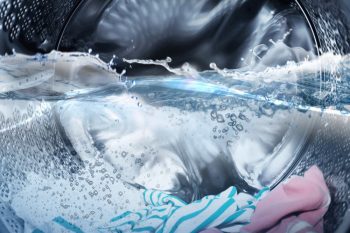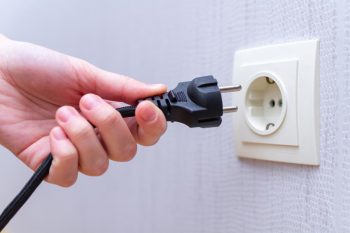
Water dispensers are a standard feature in modern refrigerators, providing cold, filtered water at the touch of a button. But what happens when the water dispenser in your General Electric (GE) refrigerator stops working? This article delves into the most common reasons why your GE refrigerator may not be dispensing water and how to troubleshoot and fix these issues.
Your GE refrigerator may not be dispensing water due to a clogged water filter, air in the water system, a frozen water tank or line, kinked or bent water lines, or a damaged water inlet valve. To fix this, check the water line, replace the filter if necessary, purge air from the water system, thaw the frozen water line or tank, straighten any kinked water lines, and inspect the water inlet valve. Always remember to unplug the refrigerator and turn off the water supply before starting any troubleshooting steps.
Common Causes for Water Dispenser Issues
Several factors may lead to a non-functional water dispenser in your GE refrigerator. Here are the most common ones:
- Clogged or Partially Clogged Water Filter: If the water dispenser is running slowly or not at all, a clogged water filter could be the culprit. Over time, water filters can become clogged with mineral deposits and other impurities, inhibiting water flow.
- Air in the Water System: After replacing the filter, air may be trapped in the water lines. This can prevent water from dispensing.
- Frozen Water Tank or Line: Freezing temperatures can cause the water tank or water line to freeze, blocking the flow of water.
- Kinked or Bent Water Lines: If water lines are kinked or bent, they can slow the flow of water or even stop it altogether.
- Damaged Water Inlet Valve: The water inlet valve connects your refrigerator to your home’s water supply. If it becomes clogged or broken, it can prevent water from being dispensed.
Troubleshooting Steps for a Non-Dispensing Water Dispenser
If your GE refrigerator’s water dispenser isn’t working, following these troubleshooting steps can help identify and resolve the issue:
- Check the Water Line: Ensure that the water line to the refrigerator is turned on and the valve is fully open.
- Inspect the Water Filter: If the water filter is clogged or partially clogged, replacing it may solve the problem. GE recommends replacing the water filter every six months or sooner if the water flow to the dispenser or ice maker decreases.
- Purge Air from Water System: After replacing the filter, hold down the dispenser cradle for at least 5 minutes to purge any trapped air from the water lines.
- Thaw the Frozen Water Line or Tank: If you suspect a frozen water line or tank, unplug your refrigerator and allow it to thaw, or use a hairdryer on the lowest setting to thaw the water in the line.
- Straighten Kinked or Bent Water Lines: If the water line is kinked or bent, straightening it may restore proper water flow.
- Inspect the Water Inlet Valve: If the water inlet valve is damaged or clogged, it may need to be replaced.
Safety Measures When Fixing a Non-Dispensing Water Dispenser
Safety is paramount when attempting to fix a GE refrigerator that is not dispensing water. Here are some safety measures to follow:
- Unplug the Refrigerator: Before working on any electrical appliance, unplug it to avoid the risk of electric shock.
- Turn Off the Water Supply: Shut off the water supply to prevent water leaks or damage while working on the dispenser.
- Wear Safety Gear: Use gloves and safety goggles to protect your hands and eyes.
- Follow Manufacturer Guidelines: Consult your refrigerator’s user manual for specific instructions and safety precautions.
- Handle Tools with Care: Use the appropriate tools for the job and handle them safely to avoid injury.
- Seek Professional Help When Needed: If you are unsure about any aspect of the repair process, it’s best to contact a professional appliance repair technician.
Preventing Future Water Dispenser Issues
Taking preventative measures can help avoid future issues with your GE refrigerator’s water dispenser:
- Regularly Replace the Water Filter: Replace your water filter every six months or sooner if the water flow decreases.
- Regularly Clean the Dispenser: Regular cleaning prevents the buildup of mineral deposits and other impurities.
- Maintain Proper Water Pressure: Low water pressure can cause slow water dispensing. Ensure your home’s water pressure is within the recommended range for your refrigerator model.
- Inspect the Dispenser Regularly: Regular checks can help spot potential issues early, preventing more significant problems down the line.
- Keep the Water Supply Clean: If there is new construction in your area, there can be more sediment entering the water system. This extra sediment can clog your filters more frequently than the recommended 6 months replacement time frame.
By following these tips, you can keep your GE refrigerator’s water dispenser in top shape, ensuring a steady supply of cold, filtered water whenever you need it. If you’re still having trouble with your water dispenser after following these steps, it may be time to contact a professional for assistance.
Frequently Asked Questions
What kind of water filter does my GE refrigerator use?
The type of water filter your GE refrigerator uses can vary depending on the model of the refrigerator. Refer to your user manual or the label on the filter housing for the correct filter model.
How can I tell if my water inlet valve is damaged?
Some signs of a damaged water inlet valve include slow water dispensing, no water dispensing, or water leaks from the back of the refrigerator. However, diagnosing a faulty water inlet valve can be complex and may require a professional technician.
How do I clean my water dispenser?
To clean your water dispenser, use a damp, soft cloth or sponge to wipe the dispenser area. Avoid using harsh cleaning chemicals as they can damage the dispenser.
How do I maintain proper water pressure for my refrigerator?
The water pressure for your refrigerator should be between 40-120 psi. If your home’s water pressure is lower than this, you may need a plumber to adjust it.
How do I know if my water line is kinked or bent?
A kinked or bent water line will usually be visible. You can check the water line at the back of the refrigerator. If it is not straight, it may be causing water dispensing issues.












